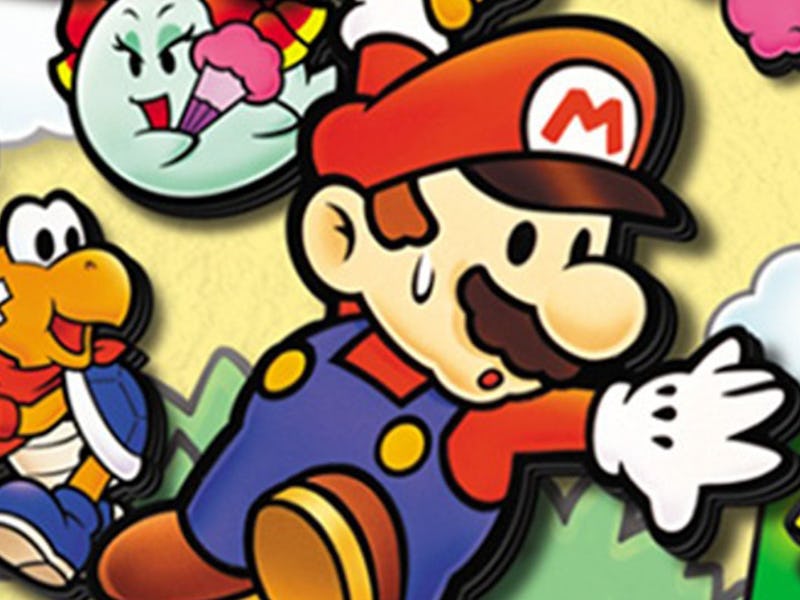23 Years Later, Paper Mario Is Just as Revolutionary as Ever
A bold spin on an iconic franchise.

In any creative history, the road not taken can loom large. Nic Cage as Superman. James Cameron making a Spider-Man movie. In 1996, the final Mario game was released for the Super Nintendo: Super Mario RPG. As the title indicates, this was a clear break from other Mario games, which is why Shigeru Miyamoto brought in Square (still just Square at this point), of Final Fantasy fame to develop the game.
Combining elements of the studios was enough of a success that Nintendo wanted more. Nintendo approached Square for more, but they had another project which needed their full attention: Final Fantasy VII. History has shown that they probably made the right decision here, especially considering that the would-be sequel that developed out of Super Mario RPG became a franchise of its own. Paper Mario, which came out in 2000 for the N64, is available right now if you’ve subscribed to Nintendo Switch Online + Expansion Pack.
Paper Mario represents a moment when Nintendo was no longer the sole creative leader in video games. For players in the year 2000, the game’s faux-retro flat look might have felt reminiscent of the 1997 PlayStation game PaRappa The Rapper. Although that game may have felt slight at the time, it offered a stylistic revolution that countered the ongoing push towards quote-unquote realism in games.
Paper Mario took PaRappa’s baton and ran with it. The game’s look naturally lends itself to the stage play format that Miyamoto had envisioned for SMB3. The paper cutouts feel like something a child could move around on their own, which of course is the point of the game.
Paper Mario was meant to be a game whose natural state is on the easier side of things. Hiroyasu Sasano, who acted as a liaison between Nintendo and the game’s developer, Intelligent Systems, said in an interview that developers “tried to avoid the need for grinding; the difficulty is always set so that if you just try a little harder you can probably succeed. It should be a stress-free experience for children and adults alike.”
After Bowser kidnaps Princess Peach’s entire castle, that’s exactly the vibe the game gives off. This is a terrific first RPG that shows, instead of tells, how turn-based combat works. After Bowser defeats Mario with the power of his newly acquired Star Rod and essentially boots him halfway across the Mushroom Kingdom, Mario must begin his long voyage back. Meanwhile Princess Peach seeks to help him with the assistance of a young star named Twink, undergoing a series of mini-games.
Super Mario RPG’s parties consisted of a mix of old and new characters. Paper Mario’s innovation is that it delves into characters already existing within Mario games, giving life to NPCs whose lives were rarely considered. Goombario, a Goomba who idolizes Mario, is certainly a shift for any player who has spent years jumping on top of his ilk. The same goes for the rebellious Bombette, a Bob-omb gone bad (or good), and Lady Bow, an aristocratic Boo who has seen her ilk tormented by eventual boss Tubba Blubba for too long.
Bowser’s Star Rod has also allowed for villains beyond the Koopalings. King Goomba, the game’s first (and pretty easy) boss is delightfully kooky. This is a game for kids, with the added challenge of timed attacks, so the bosses on the whole do not provide much of a challenge. The game steps up a bit with Bowser, but anyone looking for a challenge shouldn’t be barking up Paper Mario’s tree.
What Paper Mario does instead is bring new life to an iconic franchise. It not only offers a new look that feels old, but it lets players take on all these unexpected characters. An unlikely alliance between Goombas, Koopas, Boos, and Mario is a clever turn for a franchise known for so many. That it comes in such a delightful package is just icing on the cake.